Why Fitness Fashion Isn’t Going Anywhere, According to Sweaty Betty’s US CEO
Welcome to Fit for Business, a new column from Well+Good’s co-founder and publisher Alexia Brue. Each week, she’ll take you behind-the-scenes with the most successful healthy-living entrepreneurs around the world, so you can learn what inspires them, what challenges them, and what it’s like to work in the (booming) wellness space.
This week she’s sitting down with Erika Serow, president and US CEO of Sweaty Betty, the ultra-chic London-based activewear brand beloved by cool (sweaty) girls around the world.
Erika Serow isn’t your typical CEO. As a partner at consulting firm Bain & Company for nearly 20 years, she was much more accustomed to telling executives what to do, rather than being the one actually leading a company. But then an opportunity at a retail brand she loved—Sweaty Betty—came along, and the career consultant was so intrigued that she moved from advisor to CEO in the US. (That's not all: She's president there as well.)
Besides access to gorgeous leggings, a community of enthusiastic, social media-obsessed shoppers, and regular in-office yoga classes, what was the appeal for Serow to make the leap? The fact that Sweaty Betty stands for so much more than just activewear. "Fitness is becoming not an activity that you do outside of your life—it is part of your life. You go to your favorite classes or your favorite gym, or you go on a walk or run with your friends, then you go out to lunch or dinner, and it's how you live," she says. "When you walk up and down Fifth [Avenue in New York City's Flatiron neighborhood], everyone is wearing leggings. This is how we live today."
Over chopped salads, Serow dished about how the iconic British brand has big plans to up its profile in the US—and why she thinks activewear is so much more than just a trend.
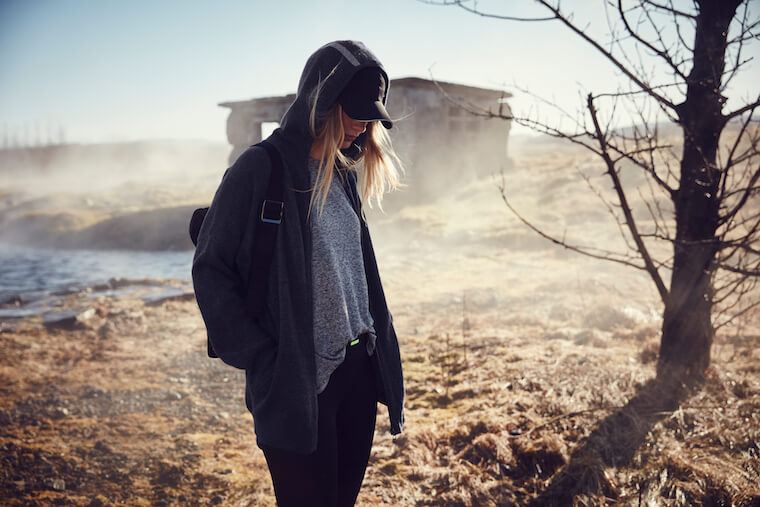
Tell me about any early experiences that got you interested in business—and that brought you to this point of being a CEO for the first time after a very successful 20 years at Bain & Company.
My dad was a professor, my mom was a career statistician for state health, so there's no one in my family who ever did business. I honestly have no idea where my interest came from, but literally from the time I was 12, I was obsessed with the Coca-Cola Company and I wanted to work at Coke more than anything in the world. When I was in high school, I worked in a Hallmark store for four years, taking inventory and running all the ordering. I've always had this combination love of retail and business from the earliest days.
When you were at Bain, you obviously had the opportunity to join a number of portfolio companies, but you waited 20 years....
My passion and my biggest expertise at Bain was always in apparel. I had worked with most of the department stores in the US and many of the brands that sell into them. I loved watching the industry but, ironically, over the course of working with really amazing big companies, I also knew that I never wanted to work at a big company. I [knew that I] personally would not flourish in a big company.
Is that because you just like to see things happen more quickly?
That's a generous way of saying it. I think I'm impatient, and I like to stick my fingers in lots of things. As a consultant, you can do that, but if you're in a big business roles are fairly well-structured for good reasons. The finance people don't like it when the marketing people stick their fingers in, and vice versa. I'm curious enough by nature that I want to have my fingers and toes in everything!
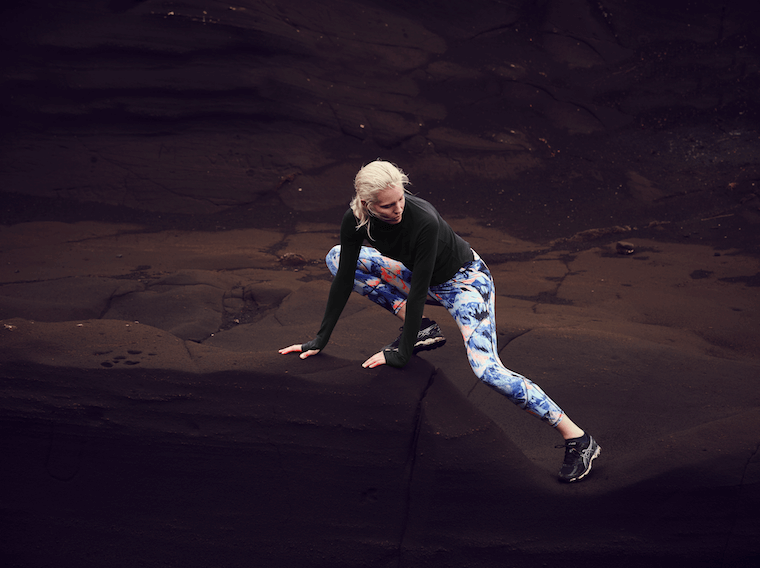
There’s obviously so much competition in the activewear category. What is Sweaty Betty’s point of difference?
I always tell people that there are three things about us that make us different—beyond the fact that we have a very cool and authentic founder story, because Tamara Hill-Norton lives, sweats, and breathes in this stuff.

{{post.sponsorText}}
One is that we're from London, and people say, "So, what?” It's actually such an important part of who we are, because there's this vibe with London that's so different from New York, Los Angeles, or Vancouver. London has a very sophisticated but relaxed urbanite. The London pace is less hectic than New York. It's a style that's less edgy and less hard than New York, and it has the sense of individualism. That's a big part of who we are. Our first shop opened in Notting Hill in 1998, and our entire design team sits in London.
"After a workout, we're going to have cocktails with friends, or we're going to have pizza or chocolate—and we're not going to feel bad about it, because that's what real women do."
The second difference is that everything has to be technical, but it also has to be beautiful. Beautiful is not only about having seams that are flattering, but it also is this whole notion that we're designing in a collection-driven mindset instead of a product-driven mindset. We're not designing a key item, and then saying, "What color should we do that key item in?" We were so inspired by the Majerelle blue in the Majorelle Gardens that we've done a whole collection on that. So we flip it: We have a color palette and a story that we're telling, and then we figure out where to layer in our hero product.
The third thing is our mantra is "green juice and cocktails." We are not trying to deliver enlightenment. We can't empower you—you can only empower yourself. We're not trying to make you a world-class professional athlete. We're trying to help real women look good and feel good and live real lives. After a workout, we're going to have cocktails with friends, or we're going to have pizza or chocolate—and we're not going to feel bad about it, because that's what real women do. So this is all about living a full and fun life, and as a brand, we just don't take ourselves too seriously.
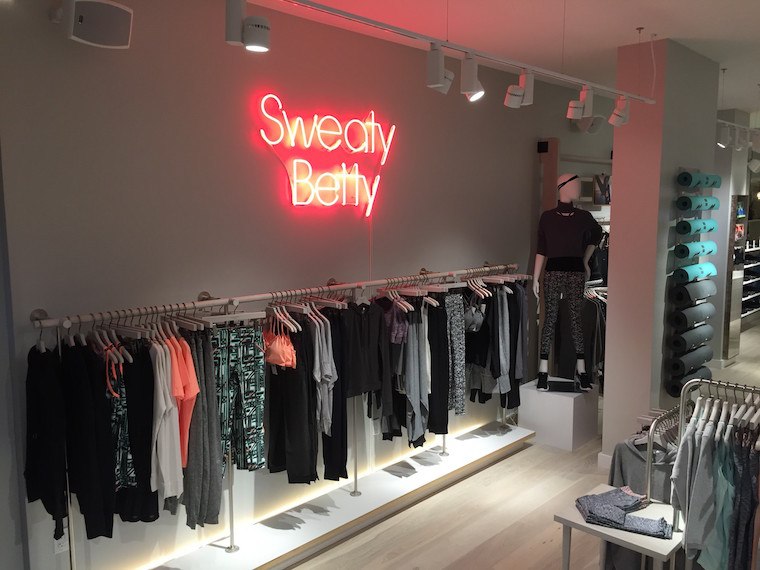
Do you think the activewear category will just continue to grow, or is there a fitness fashion saturation point?
We are in a zone right now where, if business casual was the thing of the '90s, and denim was the thing of the 2000s, activewear is now that. This is not a trend; this is simply how people dress.
Do I think the category will continue to grow at 15 percent forever? No. Nothing can. But I've heard some people compare leggings to colored denim, and this isn't the colored denim phenomenon. This is business casual. The shift that is happening is as big as people not wearing suits and men starting to wear khakis and blue shirts. What's been that revolution for women? This is that.
"The shift that is happening is as big as people not wearing suits and men starting to wear khakis and blue shirts."
What is the vision for Sweaty Betty’s growth in the US? How do you think about store locations?
We opened our first store here in 2013, so from the get-go we'll be more digital here. Our aspiration is to stay 50/50 in terms of in-store to digital. The plan is to open 8 to 10 retail stores a year over the next 3 to 4 years, being very deliberate about where we open those. We are focused on 15 major metros for stores. So obviously, New York and Los Angeles, where we are now. We're opening our third LA store late October, early November. We're going though the permitting process in San Francisco—our first Bay Area store will open next May. We're hoping to get beyond that into Dallas, Houston, Atlanta, D.C., Chicago, Boston, perhaps Denver, perhaps Salt Lake, perhaps Minneapolis, perhaps Seattle.
There is part of the UK formula that translates directly. We have 51 stores in the UK, and we're not in a single mall, because our business model in the UK has been go on the street where people live their everyday lives. It’s the same thing here in the US: We look for places that aren't necessarily retail locations. We want people to find us going to and from Whole Foods, SoulCycle, Toby's [Estate Coffee], or Blue Bottle, because that's the mindset we’re looking to connect with. It's not apparel; it's life.
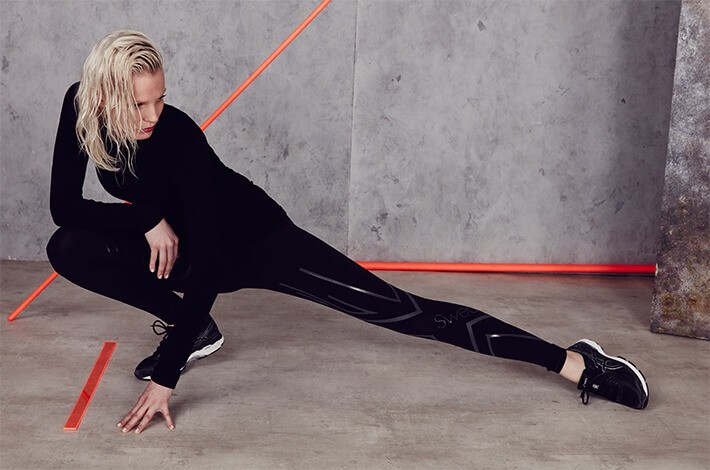
Eight months in, any surprises in your first CEO role?
I tell everyone the thing that surprised me the most—and I've gone back to all of my former clients and apologized to them for not appreciating this—is the sheer number of decisions that have to get made on any given day. Not big and earth-changing decisions, but just the little things that I had no appreciation for what went on. It's a very high-energy thing—it's not a burden, just a surprise.
Tell me about a key decision you made that was a turning point, but that frankly could have gone either way.
I’ll give you a very real-time example: We had to make call very early in February about making a really big push on a product launch. We decided to make big bets on inventory against a new legging called the Power. It's not one that we've had in the market before. So we had to make an inventory bet, and then we had to spend a lot of money on marketing that story.
"Our business in the US, which is about a fifth the size of the business in the UK, is selling about half as many as the UK."
We've never done one concerted, really big push before in the US. On September 8, we had an ambition to have 1,000 people posting about us on Instagram in one of two pairs of leggings. We weren't sure how it would go, and it was amazing. We got more than 1,000 posts of people in these two different legging patterns. Our business in the US, which is about a fifth the size of the business in the UK, is selling about half as many as the UK. The stores are having crazy traffic—girls are coming in and they're asking about it because they've seen it on Instagram.
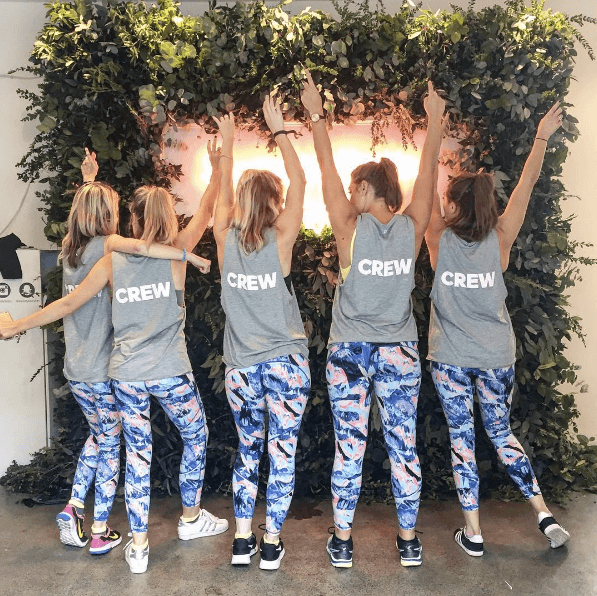
So as a company selling a fitness product, how does Sweaty Betty walk the walk in its own corporate culture?
Our colleagues in the UK set a great example for us—every day there's a fitness offering. In the US we have smaller office, so we have one of the instructors from Y7 come and do a yoga class with us weekly. We celebrate big moments with fitness experiences. Last Friday, after we had gotten through a big marketing push, we all went and did a class at Chaise Fitness together and then we went out for drinks afterwards.
A CEO’s to-do list is always long. What are your favorite efficiency hacks?
I have to fly to both the UK and the West Coast once a month, so my efficiency hacks are travel-related. I do calls on the way to the airport and no wi-fi on flights so I can get bigger projects done. I have two complete sets of toiletries and make-up to make packing a breeze. And I’m a big proponent of double-purpose packing, meaning I wear leggings as part of an outfit one day and work out in them the next day.
Loading More Posts...